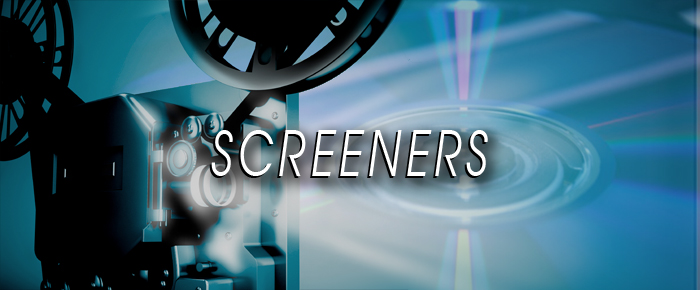
By Robin E. Simmons
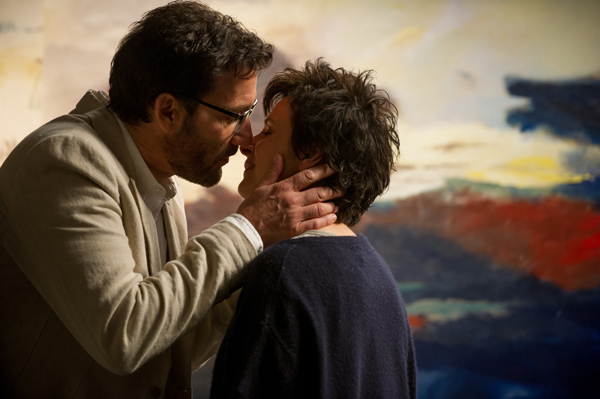 WORDS & PICTURES
WORDS & PICTURES
A big favorite at the 2014 Palm Springs International Film Festival – I think there were a total of three sold-out screenings – Fred Schepisi’s engaging adult romantic melodrama about two teachers at a Maine prep school who battle each other and their own demons satisfies because of the undisputed chemistry of the two leads.
Clive Owen is Jack Marcus, an aggressive, gifted, honors English teacher who preaches the power of the written – and spoken – word. For a while, he manages to hide his serious drinking problem that threatens to destroy his world. When Juliet Binoche’s Dina Delsanto the new art teacher arrives, Marcus is energized and soon there’s an open debate in the school about whether words or pictures have the greater power. It’s a battle between the dominance of the left and right brain. Delsanto is already an acclaimed abstract artist, but she no longer paints because of painful, crippling rheumatoid arthritis. But soon she is forced to paint again when the war between the two teachers becomes a school-wide event. One of the most amazing scenes in the film is crippled Delsanto painting in a way that cleverly allows her to spread paint as she wishes on a large flat canvas. (In actual fact, Binoche is an accomplished artist and what she paints in the film is her striking original art.)
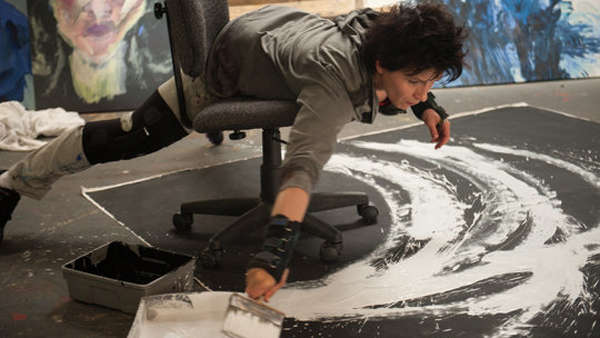 Gerald Di Pago’s original script is richly detailed and tight. And it stays on track. It is a welcome relief to idiotically flat so-called romantic comedies like Adam Sandler’s BLENDED. Di Pago is a veteran screenwriter (he wrote the cult fave SHARKEY’S MACHINE). He was also a high school English teacher and understands the specialized angst of curious young co-ed students and self-satisfied, sometimes glib teachers ensconced in a semi-closed setting. The world of the story rings true as does the push-pull fascination between the two teachers who we hope will somehow get together and find healing for the pain they experience. I’m giving nothing away here as that is the core question the movie asks. If you like intelligent, adult romances, don’t miss this great looking, emotionally satisfying film that massages both halves of your brain’s hemispheres. Opens June 8 at Cinema’s Palm d’Or.
Gerald Di Pago’s original script is richly detailed and tight. And it stays on track. It is a welcome relief to idiotically flat so-called romantic comedies like Adam Sandler’s BLENDED. Di Pago is a veteran screenwriter (he wrote the cult fave SHARKEY’S MACHINE). He was also a high school English teacher and understands the specialized angst of curious young co-ed students and self-satisfied, sometimes glib teachers ensconced in a semi-closed setting. The world of the story rings true as does the push-pull fascination between the two teachers who we hope will somehow get together and find healing for the pain they experience. I’m giving nothing away here as that is the core question the movie asks. If you like intelligent, adult romances, don’t miss this great looking, emotionally satisfying film that massages both halves of your brain’s hemispheres. Opens June 8 at Cinema’s Palm d’Or.
NEW FOR THE HOME THEATER:
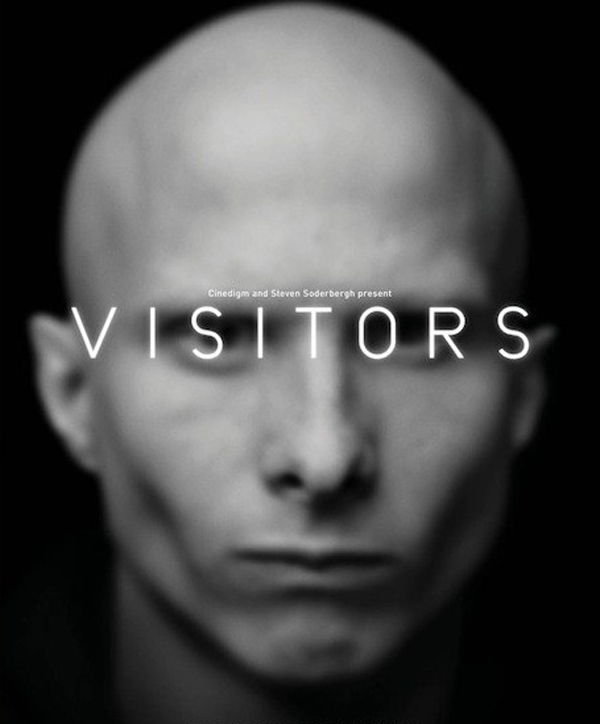 VISITORS
VISITORS
Friedrich Nietzsche said, “The truth is ugly: we have art so as not to perish from the truth.” It’s a great quote. A version of that phrase is on some of the poster art for director Godfrey Reggio’s latest movie. But it alone does not elevate the movie to the level of art. In fact, I’m not sure that calling this strange, arty, pretentious conceit a “movie” is fair because the popular use of that term conjures up the notion that there’s some kind of flow to the images that connect to a greater meaning or story. I loved Reggio’s KOYAANISQATSI brilliant 1982 non-narrative film about “life out of balance.” It was at the time avant-garde, experimental and powerful with images that were beautiful and sometimes searing. The final effect was an emotional and spiritual epiphany that made real what we somehow already suspected but had not yet widely defined. And Phillip Glass’ great score was a perfect fit to the stunning cinematography of Ron Fricke.
I had high hopes for Reggio’s newest film and had read glowing reports of how it offered “the audience an experience beyond information about the moment in which we live.” Don’t all films in some nebulous way do the same thing or at least strive to tap into some facet of the zeitgeist?
The sad truth is that VISITORS is a major fail. Yes, the black and white cinematography is stunning in a 4K digital projection, but the final result is 80 tedious minutes composed of only 74 shots where nothing really happens in the near motionless images. The term “motion picture” is not really applicable here as there’s not much in motion the picture. There are a number of not particularly interesting close-ups of barely moving facial portraits, starting with an impressive gorilla head shot. There are some landscapes and “dancing” fingers. Glass’ score is effective but delivers no meaning or meditative enhancement to the obtuse mages. I discovered later that the “dancing” fingers represented hands on a smart phone or computer although there is no such device in the frame. The final shot of a tiny, full-color earth rising from the desolate moon’s pale horizon is, at this stage of our collective image consciousness, rather obvious and decidedly trite. This Stephen Soderbergh presentation is a meditation aimed, according to director Reggio, at the “atmosphere of the soul.” Good luck with that. What is obviously meant to be spellbinding and transcendent was for me a test of my tolerance. But please don’t take my word for it. As with any art (if this is indeed art), meaning is in the eye of eye beholder. You have been warned. Cinedigm. Blu-ray.
 ALAN PARTRIDGE
ALAN PARTRIDGE
The first time I saw Steve Coogan perform his alter ego, the inept, self-aggrandizing TV interviewer “Alan Partridge,” I immediately thought of self-important Piers Morgan. This full-blown British farce tracks small-time but infamous radio DJ Partridge when his fellow DJ Pat Farrell (Colm Meaney) discovers he’s about to be fired, holds the station hostage inadvertently making Partridge the siege negotiator to the police. Unbeknownst to Meaney’s Farrell, it’s Coogan who’s crashed the station’s new North Norfolk Digital executive meeting and successfully pleaded the case for Farrell’s firing instead of his own.
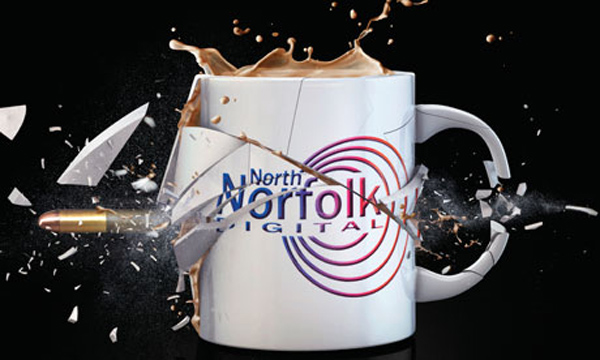 The Partridge character first appeared more than 20 years ago as a vain, self-serving BBC sportscaster on the popular faux radio show “On The Hour.” Since then Coogan has incarnated the pathetic, eccentric, self-absorbed doofus on a number of shows including the silly Brit TV talk show “Knowing You, Knowing Me” and the sitcom “I Am Alan Partridge.” For those who have followed the backstory, there’s still a vestige of sympathy for Partridge even though he killed a guest on live TV, had a nervous breakdown in Dundee and wrote his vanity book “Bouncing Back” that failed to catch on with the public. Admittedly, there’s a lot baggage to Partridge’s personal oeuvre, but you don’t have to know any of it to laugh out loud at this stand-alone, surreal, chapter of his desperate, off-kilter life. I loved seeing Coogan’s Partridge dashing about in his Kia sponsored car with the garish radio station ad painted on the side and I relished waiting for the moment when Meaney’s Farrell discovers Partridge is responsible for his firing. This is not for everyone, but for those who get it, this is pure gold. It is as the UK movie poster declares: “12 hostages. 24 hours. 1 partridge. On air. Under siege. Out of chat.” A sequel has already been announced. Magnolia. DVD.
The Partridge character first appeared more than 20 years ago as a vain, self-serving BBC sportscaster on the popular faux radio show “On The Hour.” Since then Coogan has incarnated the pathetic, eccentric, self-absorbed doofus on a number of shows including the silly Brit TV talk show “Knowing You, Knowing Me” and the sitcom “I Am Alan Partridge.” For those who have followed the backstory, there’s still a vestige of sympathy for Partridge even though he killed a guest on live TV, had a nervous breakdown in Dundee and wrote his vanity book “Bouncing Back” that failed to catch on with the public. Admittedly, there’s a lot baggage to Partridge’s personal oeuvre, but you don’t have to know any of it to laugh out loud at this stand-alone, surreal, chapter of his desperate, off-kilter life. I loved seeing Coogan’s Partridge dashing about in his Kia sponsored car with the garish radio station ad painted on the side and I relished waiting for the moment when Meaney’s Farrell discovers Partridge is responsible for his firing. This is not for everyone, but for those who get it, this is pure gold. It is as the UK movie poster declares: “12 hostages. 24 hours. 1 partridge. On air. Under siege. Out of chat.” A sequel has already been announced. Magnolia. DVD.
robinesimmons@aol.com










































